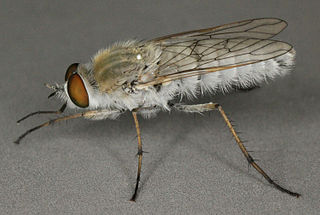 W
WAcrosathe annulata is a species of stiletto fly belonging to the family Therevidae. It is a Palearctic species with a limited distribution in Europe
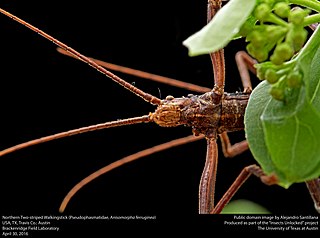 W
WAnisomorpha ferruginea is a species in the family Pseudophasmatidae, in the order Phasmida ("walkingsticks"). Common names include "northern two-striped walkingstick", "dark walkingstick", and "prairie alligator". Anisomorpha ferruginea is found in North America.
 W
WAphrophora alni, the European alder spittle bug, is a species belonging to the family Aphrophoridae.
 W
WThe apple humble-bee or apple bumblebee is a species of bumblebee.
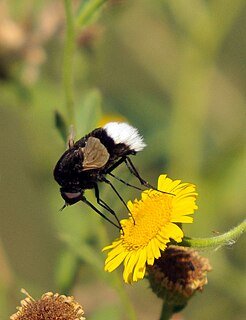 W
WBombylius varius is a species of bee flies in the family Bombyliidae.
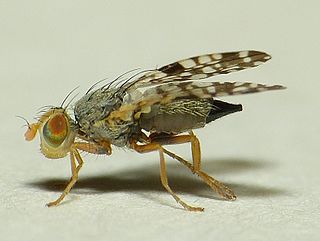 W
WCampiglossa absinthii is a species of fly in the family Tephritidae, the gall flies. It is found in the Palearctic. The larvae feed on Asteraceae, including Artemisia maritima and Artemisia vulgaris.
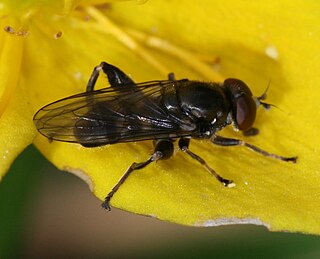 W
WChalcosyrphus nemorum is a Palearctic and Nearctic species of hoverfly.
 W
WChrysopilus thoracicus, the golden-backed snipe fly, is a species of snipe flies in the family Rhagionidae.
 W
WCoelopa frigida is a species of seaweed fly or kelp fly. It is the most widely distributed species of seaweed fly. It can be found on most shorelines in the temperate Northern Hemisphere. Other species of seaweed flies include Coelopa nebularum and Coelopa pilipes. C. frigida feeds primarily on seaweed, and groups of C. frigida flies tend to populate near bodies of water. Climate change has led to an increase in C. frigida blooms along shores, which creates a pest problem for human beach-goers. C. frigida is also an important organism for the study of sexual selection, particularly female choice, which is influenced by genetics.
 W
WCriorhina berberina is a species of hoverfly. It is found in the Palaearctic from Fennoscandia South to Iberia and Italy. Ireland eastwards through Europe into Turkey and European Russia . C. berberina is a bumblebee mimic. The body has uniformly long dense pubescence, obscuring the ground-colour. There are two forms one with the pubescence more or less extensively blackish, one in which it is entirely yellow or tawny. Criorhina differ from other bumblebee mimics - Mallota, Arctophila, Pocota and Brachypalpus by the form of their antennae: the first segments are thin and form a stalk, the third segment is shorter than it is wide. In Criorhina, the face projects downwards, in contrast to Pocota and Brachypalpus.
 W
WCyclochila australasiae, commonly known as the green grocer, is a species of cicada and one of Australia's most familiar insects. It is distributed through coastal regions of southeastern Australia. It is one of the loudest insects in the world.
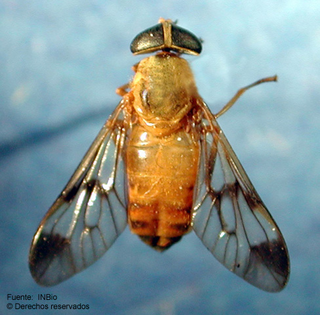 W
WDiachlorus ferrugatus, commonly known as the yellow fly in the United States or doctor fly in Belize, is a species of highly aggressive biting horse-fly of the family Tabanidae native to North and Central America to Costa Rica.
 W
WThe ebony jewelwing is a species of broad-winged damselfly. One of about 150 species of Calopterygidae, it is found in the eastern U.S. and southeastern Canada, ranging west to the Great Plains. Other common names include black-winged damselfly.
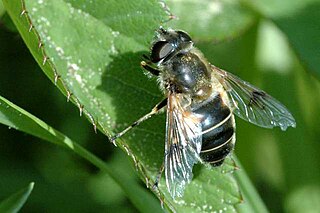 W
WEristalis rupium is a European species of hoverfly.
 W
WExoprosopa jacchus is a species of 'bee flies' belonging to the family Bombyliidae subfamily Anthracinae.
 W
WGryllotalpa africana, also known as the African mole cricket, is a relatively small mole cricket species, native to Africa, but local populations exist in Asia, and southern Europe.
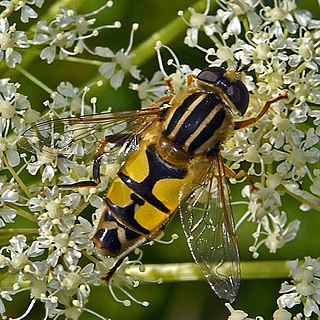 W
WHelophilus trivittatus is a species of Palearctic hoverfly.
 W
WHydrotaea dentipes is a fly from the family Muscidae. Its larvae have been found in the dung of rabbits, pigs, cows, horses, chickens and humans. It is found in the Palearctic.
 W
WLaphria saffrana is a species of robber flies in the family Asilidae.
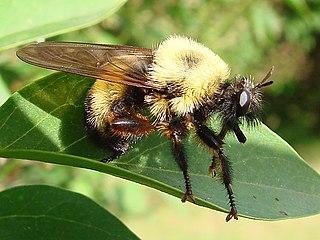 W
WLaphria thoracica is a species of robber flies in the family Asilidae.
 W
WMallota posticata is a species of syrphid fly in the family Syrphidae.
 W
WMeromacrus acutus is a species of syrphid fly in the family Syrphidae.
 W
WThe migrant hawker is one of the smaller species of hawker dragonflies. It can be found away from water but for breeding it prefers still or slow-flowing water and can tolerate brackish sites. The flight period is from July to the end of October. A. mixta occurs in North Africa, southern and central Europe to the Baltic region.
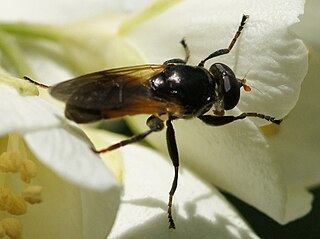 W
WMyolepta dubia is a European hoverfly.
 W
WNephrotoma ferruginea is a species of large crane fly in the family Tipulidae.
 W
WOsmia cornuta, the European orchard bee, is a species of bee in the genus Osmia found in southern and central Europe, north to Belgium, and the southern parts of the Netherlands. The first record of this bee in Great Britain occurred in 2017. They are of the solitary type; they do not live in colonies in hives like bumble bees and honey bees. They lack the pollen baskets on their hind tibiae; they do not produce honey, but they do use the pollen and nectar to stock their nests when they are ready.
 W
WPseudocreobotra ocellata, known as the African flower mantis or as the spiny flower mantis, is a Flower Mantis native to Africa, ranging from Angola and South Africa in the south to Uganda in the east and Senegal in the west. It was described by the French naturalist Palisot de Beauvois in 1805.
 W
WSargus fasciatus is a species of soldier fly in the family Stratiomyidae.
 W
WThe flower-feeding march fly, Scaptia auriflua, is a species of horse flies that occurs in Australia. Unlike other march flies this species does not bite and does not feed on blood, it strictly drinks nectar.
 W
WSciapus platypterus is a species of fly in the family Dolichopodidae. It is found in the Palearctic.
 W
WSiphona cristata is a Palearctic species of fly in the family Tachinidae.
 W
WSphaerocera curvipes is a species of lesser dung flies, insects in the family Sphaeroceridae.
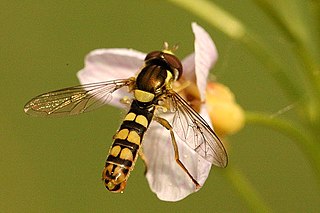 W
WSphaerophoria interrupta is a Palearctic species of hoverfly.
 W
WStomorhina lunata is a species of fly in the family Rhiniidae first described by Johan Christian Fabricius in 1805.
 W
WTemnostoma bombylans is a species of hoverfly. Larva of this species feed in decaying wood of deciduous trees.